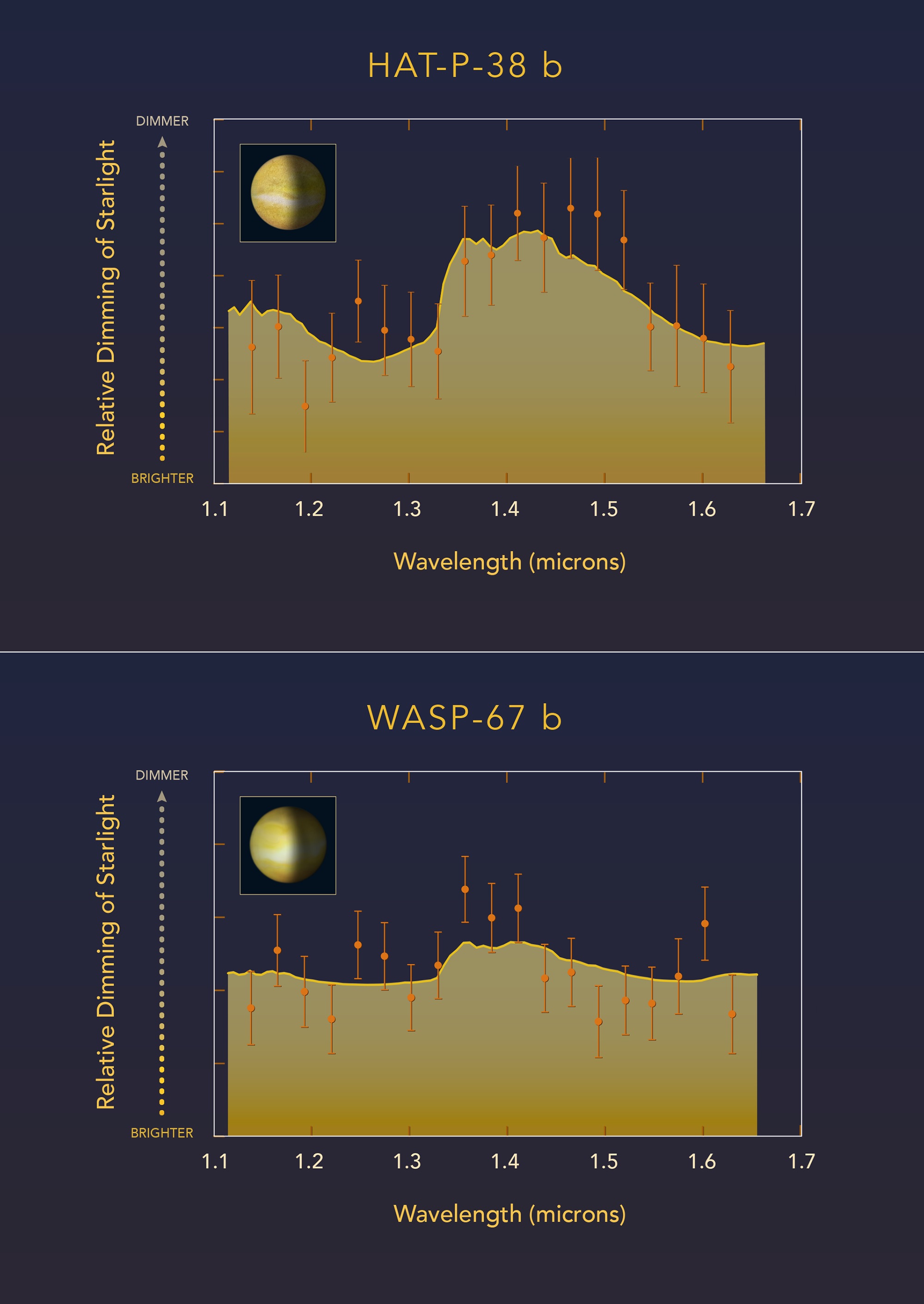Surprise! Giant Exoplanet 'Cousins' Have Different Atmospheres

The "hot Jupiter" exoplanets HAT-P-38b and WASP-67b are similar in many important ways.
For example, the giant alien worlds are about the same size and temperature (1,300 degrees Fahrenheit, or 700 degrees Celsius). And they orbit their nearly identical host stars at the same distance, completing one lap every 4.5 Earth days.
So it seems logical to assume that their atmospheres are pretty much the same as well. But that's not what astronomers found.
"One planet — WASP-67b — is cloudier than the other — HAT-P-38b," study leader Giovanni Bruno, of the Space Telescope Science Institute (STScI) in Baltimore, said in a statement. "We don't see what we're expecting, and we need to understand why we find this difference."
Bruno and his colleagues used NASA's Hubble Space Telescope to study the two exoplanets, both of which are tidally locked (meaning they both always show the same face to their parent star, just as the moon always shows one face to Earth).
Hubble's Wide Field Camera 3 instrument detected significantly more water in the atmosphere of HAT-P-38b than that of WASP-67b, suggesting that the latter world is much cloudier. (Clouds block Hubble from picking up the fingerprint of water.)
These clouds, by the way, are probably made of sodium sulfide and potassium chloride, not water vapor like the clouds of Earth, the researchers said.
Breaking space news, the latest updates on rocket launches, skywatching events and more!
The difference between the two gas giants may trace back to a divergent early history.
"You can say it's nature versus nurture," co-investigator Kevin Stevenson, also of STScI, said in the same statement.
"Right now, they appear to have the same physical properties," Stevenson added. "So, if their measured composition is defined by their current state, then it should be the same for both planets. But that's not the case. Instead, it looks like their formation histories could be playing an important role."
Additional observations by Hubble and NASA's $8.9 billion James Webb Space Telescope, which is scheduled to launch in late 2018, could shed light on the exoplanets' pasts, the researchers said.
Bruno presented the new results yesterday (June 5) at the 230th meeting of the American Astronomical Society in Austin, Texas.
Follow Mike Wall on Twitter @michaeldwall and Google+. Follow us @Spacedotcom, Facebook or Google+. Originally published on Space.com.

Michael Wall is a Senior Space Writer with Space.com and joined the team in 2010. He primarily covers exoplanets, spaceflight and military space, but has been known to dabble in the space art beat. His book about the search for alien life, "Out There," was published on Nov. 13, 2018. Before becoming a science writer, Michael worked as a herpetologist and wildlife biologist. He has a Ph.D. in evolutionary biology from the University of Sydney, Australia, a bachelor's degree from the University of Arizona, and a graduate certificate in science writing from the University of California, Santa Cruz. To find out what his latest project is, you can follow Michael on Twitter.

